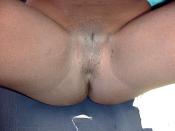Hormones & Puberty
*Hypothalamus stimulates pituitary gland
-growth hormone "^ which causes growth spurt
-ovaries and testes release gonadotrophins (sex hormones)
*males: testosterone
*females: estrogen and progesterone
*hormones stimulate
-growth of primary sexual characteristics (genital)
-growth of secondary sexual characteristics (non-genital)
-precursors to adult sexuality
Sex Differences in Puberty
*Growth spurt begins
-10.5 years in girls
-12.5 years in boys
-girls taller than boys between ages 11-13 years
*full adult height
-17 years old in girls
-21 years old in boys
*Menarche: first menstrual cycle
-typically occurs by age 12-13
-initially may involve anovulatory, irregular cycles
*Spermarche: first ejaculation
-typically occurs by age 15
-initial period of sterility
*Puberty marks an increased incidence of internalizing disorders in girls compared to boys (Haward & Sanborn, 2002; Kessler, 2003)
*Due to hormones? Environmental variables? Pregnancy?
*Is depression adaptive? (Nesse, 2000)
Precocious and Delayed Puberty
*Girls who enter puberty early more likely to have teen pregnancy
*girls who have teen pregnancy, more likely to have daughters with teen pregnancy
*Vandenbergh Effect
-male present --> earlier onset of puberty
-females only --> later onset of puberty
-may be a way of regulating population density
*Stable species - unchanging predictable environments, live long lives in large populations, large bodied, lavish lots of parental attention on few offspring - reach puberty later
*Opportunistic species - unstable unpredictable ecosystems - conditions good, everyone begins mating or pollinating --> conditions favorable, reach puberty rapidly
*Absent Father Theory:
-girls abandoned by their father behave like females from opportunistic species and reach puberty earlier (Draper, Belsky, & Harpending).
-process may be caused by pheromones
*Strategies for reproductive success
1) early pubertal development, low investment in offspring
2) later pubertal development, high investment in offspring
(Belsky, Steinberg & Draper, 1991)
*Evidence in support:
-females with absent...


